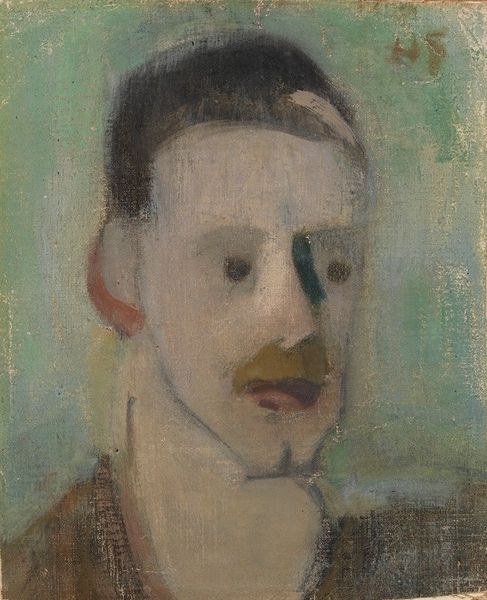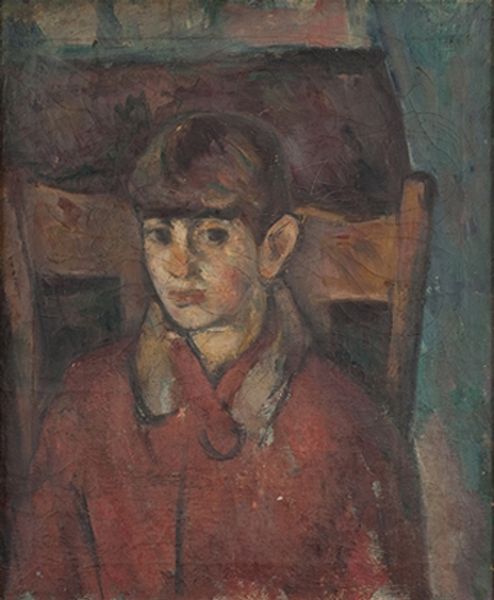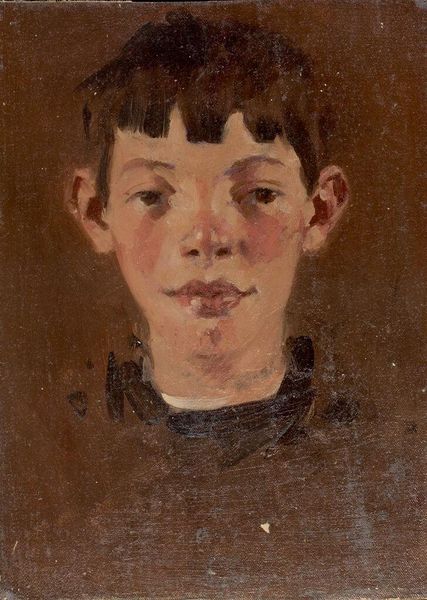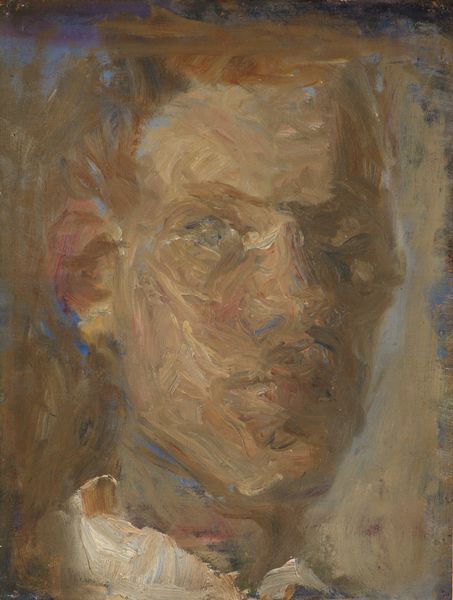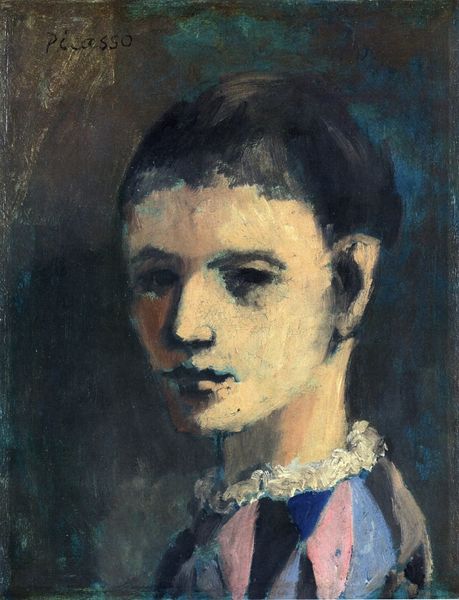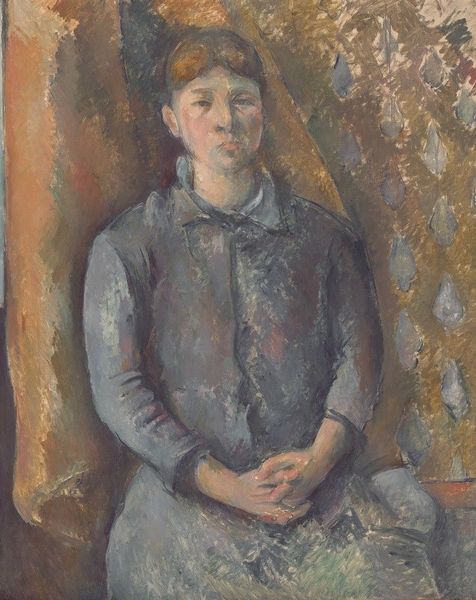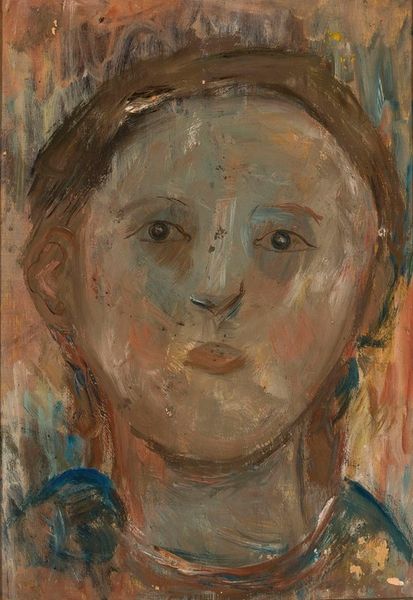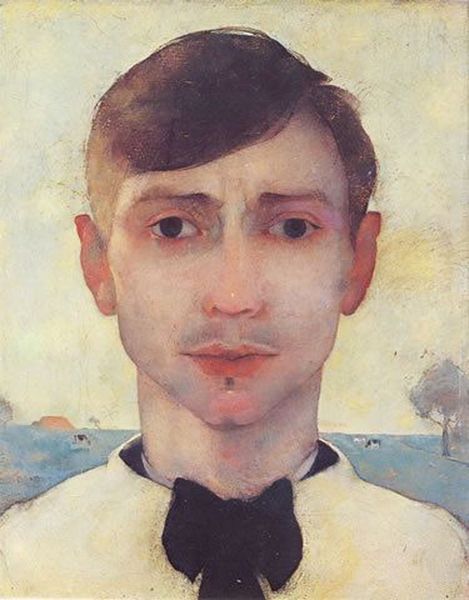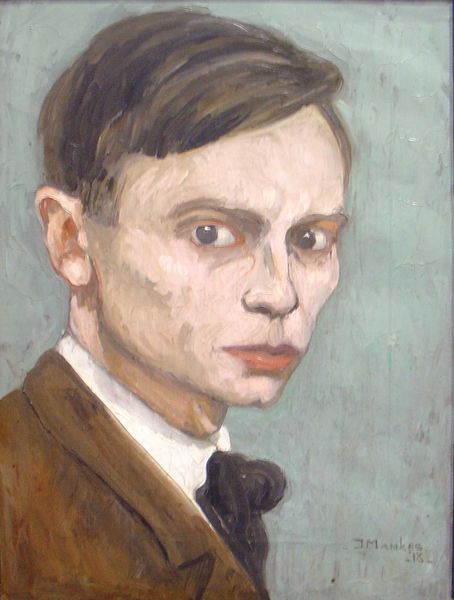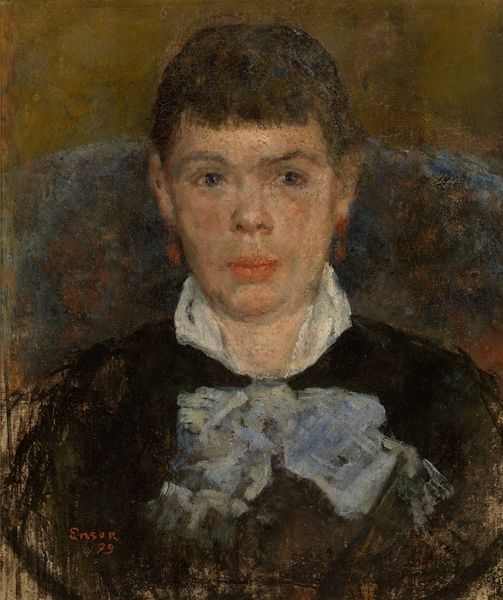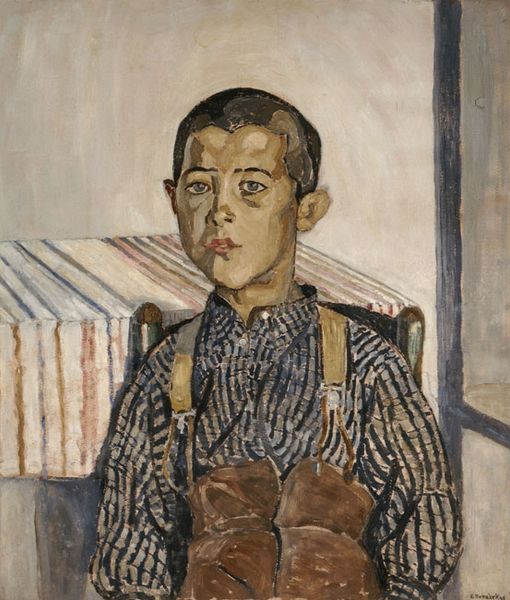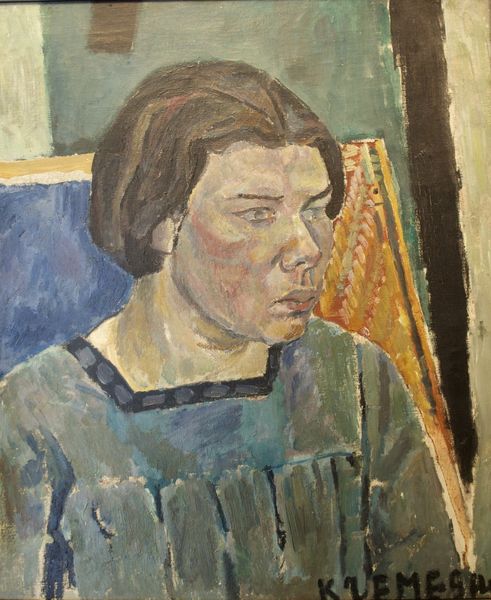
Copyright: Public domain
Editor: This is Jan Mankes' "Self-Portrait" from 1909, rendered in oil paint. The first thing that strikes me is its intimacy. It feels incredibly personal and quiet. What do you see in this piece? Curator: Beyond its aesthetic appeal, this self-portrait can be seen as a powerful statement of identity, particularly considering the social and artistic climate of the early 20th century. Mankes situates himself not just as an artist, but as an individual navigating societal expectations. How do you interpret his gaze? Does it appear confrontational or withdrawn? Editor: I'd say more withdrawn, almost introspective. There's a vulnerability there, perhaps even a subtle defiance. Curator: Precisely! Consider the period. We're on the cusp of significant shifts in gender roles and artistic expression. Mankes, through this somewhat vulnerable and almost androgynous portrayal, seems to be questioning conventional masculine ideals. How might we connect this self-representation to broader conversations about identity that were emerging at the time? Editor: So, you're suggesting his personal expression might be a reflection of, or even a commentary on, the changing social landscape? I hadn't thought of it that way. I was so focused on the aesthetic qualities, I missed the deeper socio-political context. Curator: Exactly. And think about the use of realism. He's presenting himself honestly, without idealization, further emphasizing the importance of authentic self-representation, which in itself can be viewed as a political act. Editor: That's given me a completely different perspective. I'll definitely look at self-portraits differently from now on. Curator: Wonderful! It's all about recognizing how art intersects with the complexities of identity, power, and social change.
Comments
No comments
Be the first to comment and join the conversation on the ultimate creative platform.

